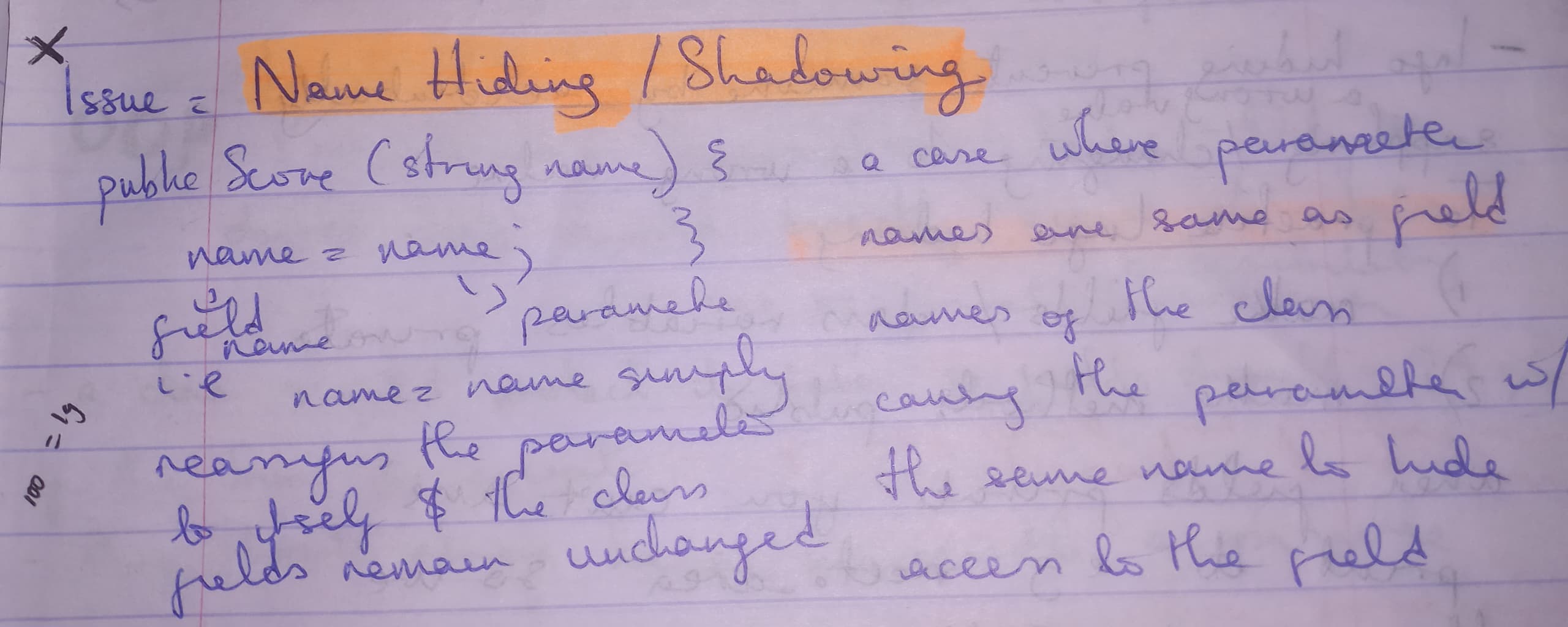Why Is Shadowing In C# An Issue?
 emptycodes
emptycodes
Shadowing, also known as name hiding, occurs when a parameter name in a method or constructor matches the name of a field in the class. This overlap causes the parameter to "hide" the class field, making it difficult to access the intended field within that scope.
Consider the following example:
public class Score
{
public string name;
public int points;
public int level;
public Score(string name, int points, int level)
{
name = name; // This will not do what you want!
points = points;
level = level;
}
}
At first glance, it might seem like the constructor assigns the values of name, points, and level to the respective class fields. However, due to shadowing, all these assignments are actually self-references. The name = name; line assigns the value of the name parameter back to itself, leaving the class field name unchanged.
Why is This a Problem?
This issue can lead to bugs where the class fields remain uninitialized or retain default values, even though it appears that they were assigned properly. This can be especially confusing during debugging or code reviews, as the code seems correct but doesn't behave as expected.
Solutions
1. Use Different Variable Names
Avoid using the same names for parameters and fields. A common convention in C# is to prefix field names with an underscore (_). This helps distinguish between class fields and method parameters:
public class Score
{
public string _name;
public int _points;
public int _level;
public Score(string name, int points, int level)
{
_name = name;
_points = points;
_level = level;
}
}
In this approach, _name, _points, and _level are clearly identified as class fields, while name, points, and level are method parameters.
2. Use the this Keyword
this refers to the current instance of the class, allowing you to explicitly specify that you're accessing the class field rather than a method parameter:
public class Score
{
public string name;
public int points;
public int level;
public Score(string name, int points, int level)
{
this.name = name;
this.points = points;
this.level = level;
}
}
In this example, this.name, this.points, and this.level clearly refer to the class fields, while the right-hand side refers to the parameters.
Conclusion
Name hiding in C# can lead to confusing and incorrect code when method parameters and class fields share the same names. By either using different variable names or the this keyword, you can ensure that your code behaves as intended and remains easy to read and maintain.
If you read this till the end, I hope you have learned something useful! 😊✨
Subscribe to my newsletter
Read articles from emptycodes directly inside your inbox. Subscribe to the newsletter, and don't miss out.
Written by